B05 Research Group
B05-1 Elucidation of the mechanism of motor synergy emergence in deep reinforcement learning
Research Outline
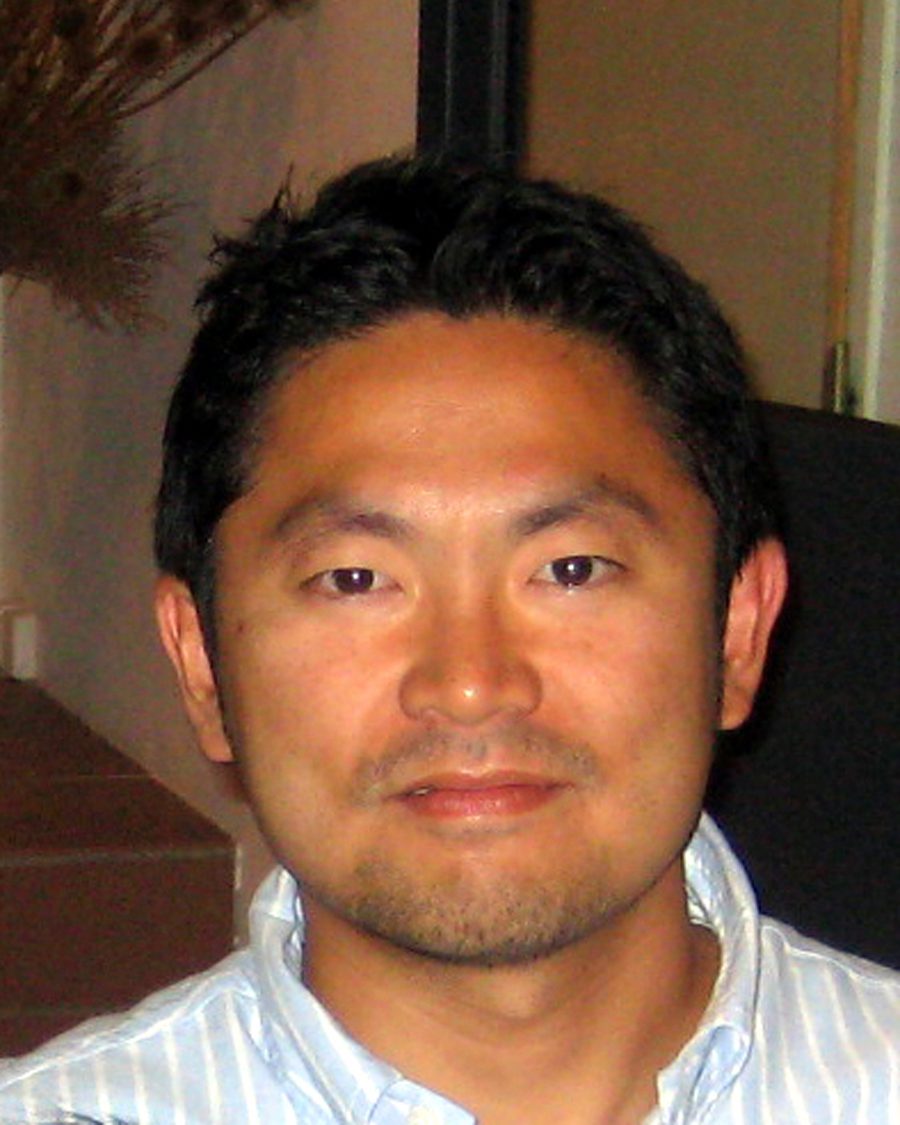
Mitsuhiro HAYASHIBE
It is known that motor synergies are used in human motor control, but what kind of law the central nervous system is computationally based on and what mechanism it is generated in is not reveiled. The mathematical model for synergy emergence has not been built yet. In computational neuroscience, an optimization method that minimizes some cost function is proposed. However, a mathematical model of the environment and body is priorly required for such optimization. Until now, few have dealt with the mechanism of what kind of computational principle can generate synergies under unknown environment case. We deepen our understanding of the mathematical mechanism as a nonlinear dynamics system, and verify its expandability and effectiveness when it is integrated with deep learning and adapted to multi-degree-of-freedom mechanical dynamics.
Members
| Principal Investigator | Mitsuhiro HAYASHIBE | Professor, Tohoku University |
| Co-investigators | Kyo KUTSUZAWA | Assistant Professor, Tohoku University |
| Akito FUKUNISHI | Master Student, Tohoku University | |
| Ahmed HANNAN | Ph.D Student, Tohoku University | |
| Li GUANDA | Ph.D Student, Tohoku University | |
| Taku SUGIYAMA | Master Student, Tohoku University |
B05-2 Adaptation ability of human postural control system revealed by a closed-loop electrical muscle stimulation system
Research Outline
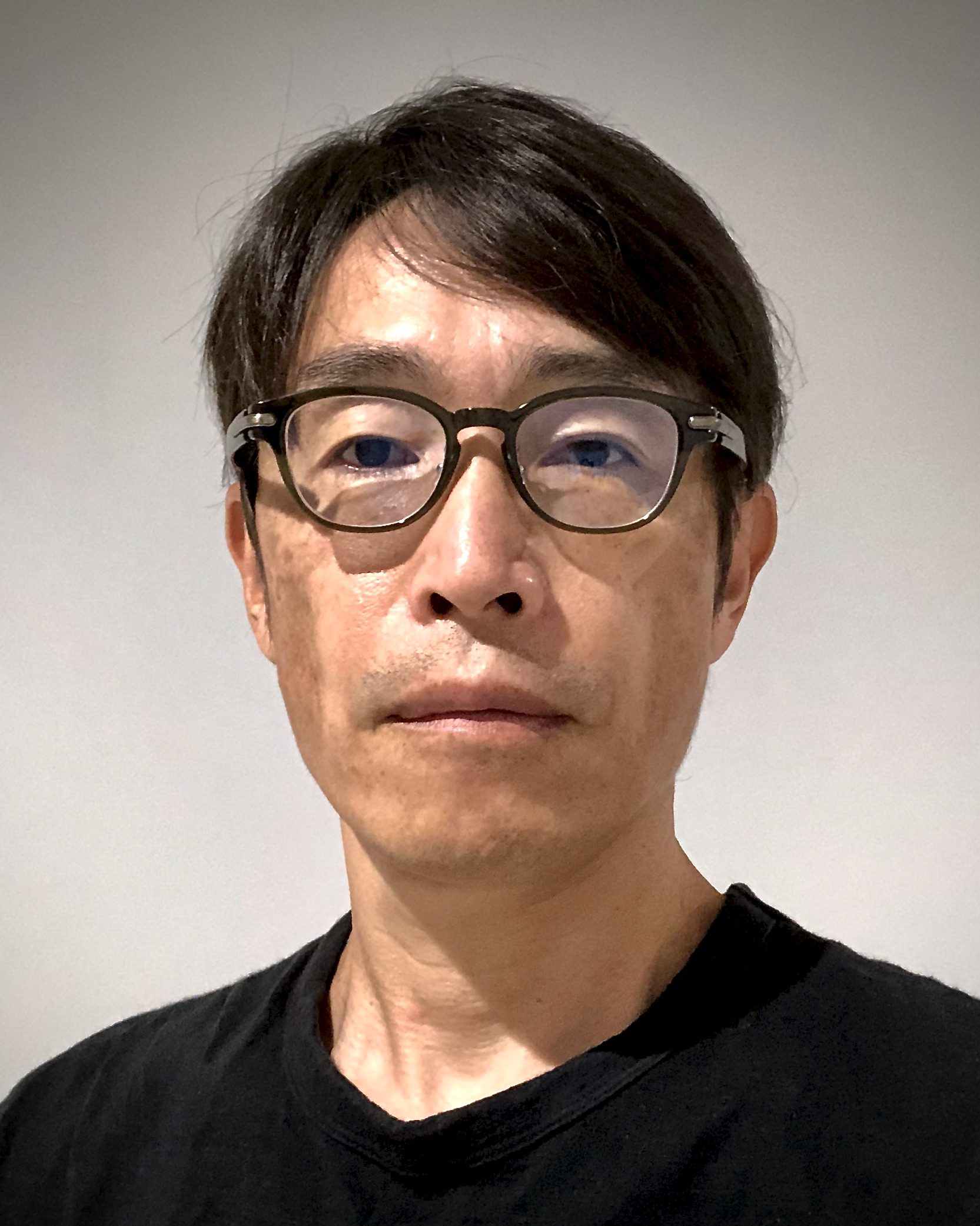
Daichi NOZAKI
This study aims to clarify the mechanisms of how the brain learns to stabilize the unstable human standing posture. Firstly, we will develop a novel closed-loop electrical stimulation system to modulate the external ankle joint torque depending on the position and velocity of the center of body mass. This system enables to artificially alter the body dynamics of human standing posture without using any special perturbation device. Secondly, we investigate the human postural control system’s adaptation process to a novel dynamics that the new system imposes by examining the pattern of spontaneous body sway and the response to the sensory and physical perturbations.
Members
| Principal Investigator | Daichi NOZAKI | Professor, The University of Tokyo |
| Co-investigators | Syota HAGIO | Lecturer, Kyoto University |
B05-3 Mechanism underlying the hyper-adaptation of bipedal locomotion to the evolutionary change of the foot.
Research Outline
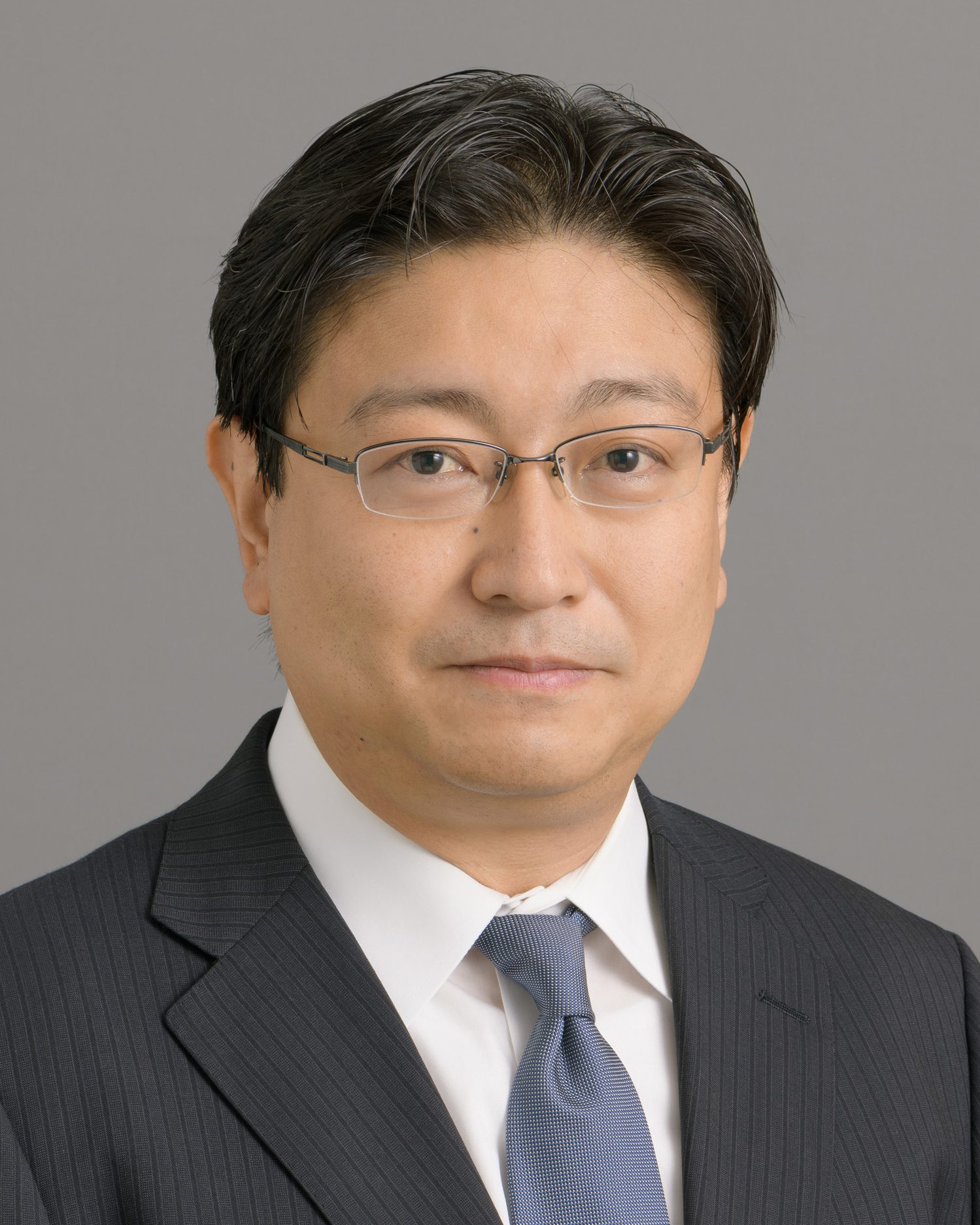
Naomichi OGIHARA
Foot is the most drastically altered part of the human body in the course of the human evolution. The fact that the human foot is specialized not only indicates that modification of the foot structure is essential for acquisition of stable, efficient human bipedal locomotion, but also suggests that the human nervous system possesses an ability to adaptively reorganize itself so that the change in the body morphology can be recognized and effectively utilized to facilitate the control of bipedal locomotion. In this study, we try to elucidate such hyper-adaptive mechanism of human bipedal locomotion based on a neuro-musculoskeletal forward dynamic simulation.
Members
| Principal Investigator | Naomichi OGIHARA | Professor, The University of Tokyo |
B05-4 Understanding neural manifold of the movements using human neuroimaging and non-invasive brain stimulation
Research Outline
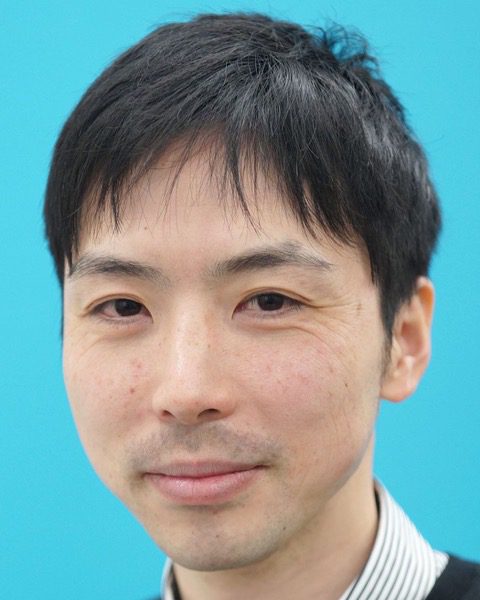
Isao NAMBU
The purpose of this research is to examine neural representation (manifold) related to movement variability in humans. To achieve this purpose, we are going to conduct an EEG (electroencephalogram) experiment with motor tasks and identify the low-dimensional representation of EEG activity during the movements. Furthermore, we are going to try to manipulate such the representation using a brain stimulation technique.
Members
| Principal Investigator | Isao NAMBU | Associate Professor, Nagaoka University of Technology |
| Co-investigators | Yasuhiro WADA | Professor, Nagaoka University of Technology |
| Hiroshi YOKOYAMA | Project Assistant Professor, National Institute for Physiological Sciences |
B05-5 Development of motor learning model that can reuse partial dynamics based on estimation of transformation between mappings
Research Outline
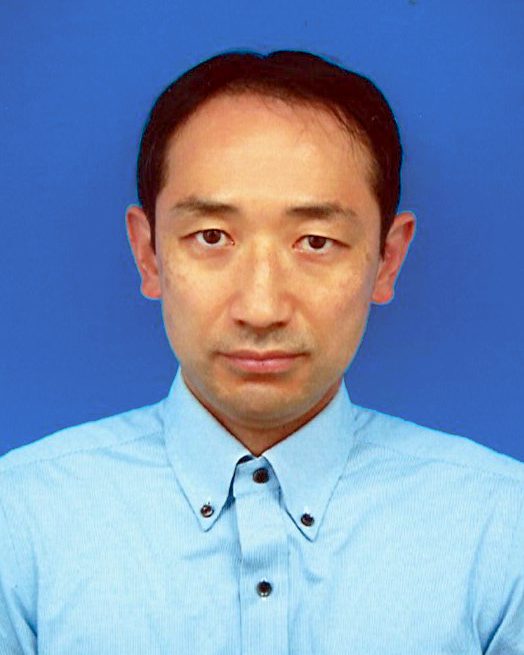
Yuichi KOBAYASHI
Human can recover from its partial disorder of its body or brain function by reusing neural circuits that were obtained in the past. This process of partial reuse of its brain function is gathering interest for better understanding of the hyper-adaptivity. The objective of the research is to propose a motor-learning model based on an idea of dependency estimation among multimodal sensors and estimation of transformation between mappings.
Motor learning of left and right arms is considered, whose partial dynamics has a specific relationship of symmetry. The property of the estimation of transformation of mappings is expected to detect the relationship after the dependency-based motor learning scheme independently learn partial dynamics. When partial disorder of the left arm controller occurs, for example, partial dynamics previously obtained by the proposed model is expected to be used to compensate the disordered function through the obtained transformation.
Members
| Principal Investigator | Yuichi KOBAYASHI | Associate Professor, Shizuoka University |
| Co-investigators | Taisei MATSUURA | Undergraduate Student, Faculty of Engineering |
| Sota NAKAMURA | Undergraduate Student, Faculty of Engineering |
B05-6 Shared-control of teleoperated robot maintaining operator’s embodiment under intervention of AI
Research Outline
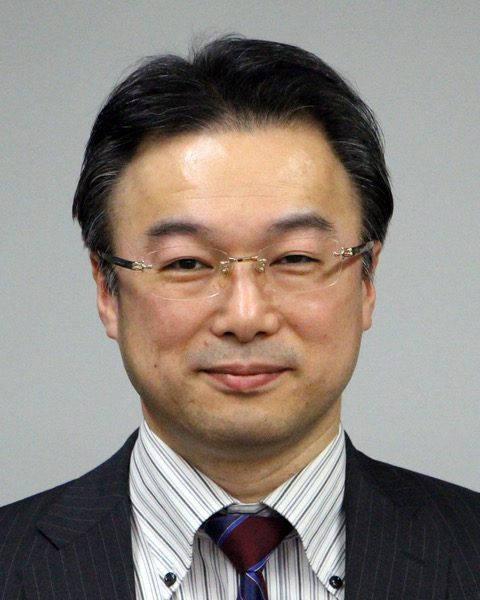
Yasuhisa HASEGAWA
In this study, we develop an operation interface which enables an operator to control a robotic arm, feeling a sense of agency and embodiment of the robot, while the robot motion is intervened and corrected by a supervisor with environment recognition function. The embodiment and feeling of the agency during robot control can be expected to maximize human adaptability to operate the robotic arm, eliciting control skills of human own body. As a result, the dexterity of the arm and success rate of task completion will be improved by aggregating human skill and AI-based recognition and control ability.
Members
| Principal Investigator | Yasuhisa HASEGAWA | Professor, Nagoya University |
| Co-investigators | Tomoya MORITA | Nagoya University |
B05-7 Systems engineering approach for understanding supraspinal mechanisms of the intermittent feedback control during human upright stance
Research Outline
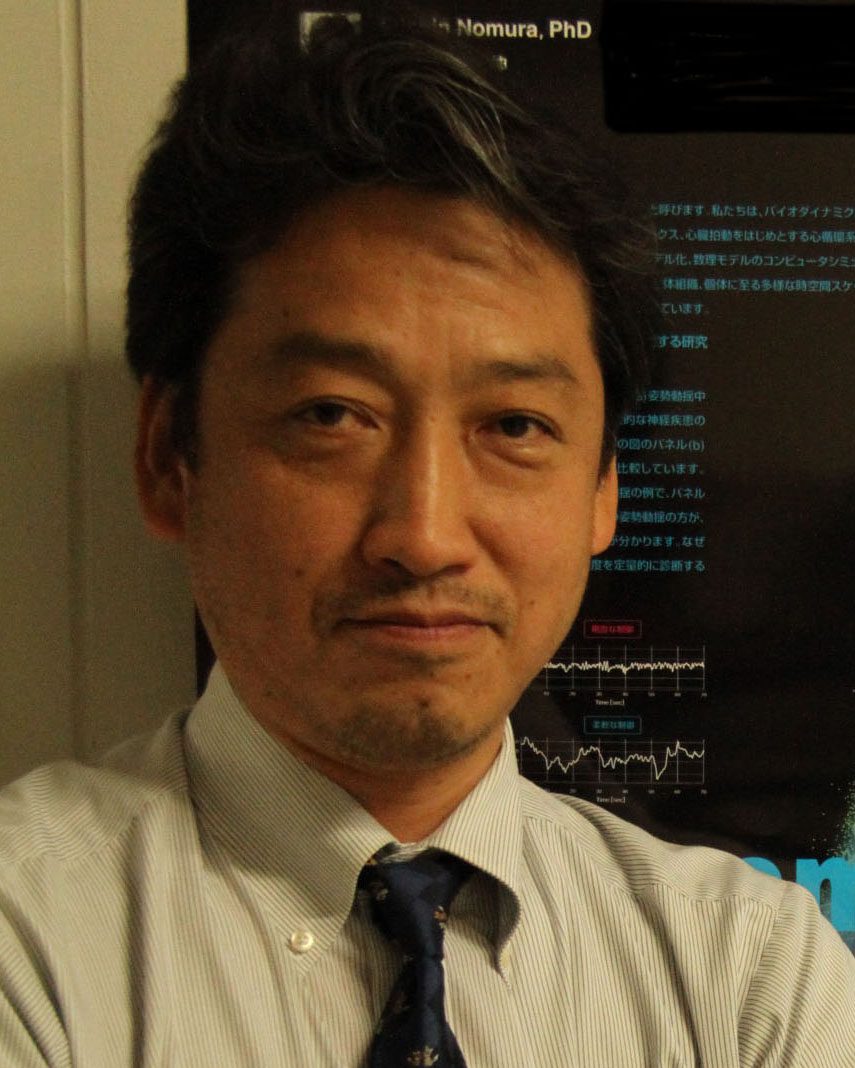
Taishin NOMURA
In this study, we aim to understand supraspinal mechanisms of the intermittent feedback control during human upright stance by integrating postural responses, EEG/EMG responses, TMS responses for evaluating corticospinal excitability, and rTMS-based neuromodulations of those responses to mechanical perturbations.
Members
| Principal Investigator | Taishin NOMURA | Professor, Osaka University |
| Co-investigators | Yasuyuki SUZUKI | Lecturer, Osaka University |
| Akihiro NAKAMURA | PH.D Student, Osaka University | |
| Matija Milosevic | Assistant Professor, Osaka University | |
| Kimitaka NAKAZAWA | Professor, The University of Tokyo | |
| Saburo SAKODA | Honorary Director, National Hospital Organization Osaka Toneyama Medical Center | |
| Takuyuki ENDO | Doctor, National Hospital Organization Osaka Toneyama Medical Center |
B05-8 A reinforcement learning model with dynamic state space that enables adaptation to indefinite environments
Research Outline
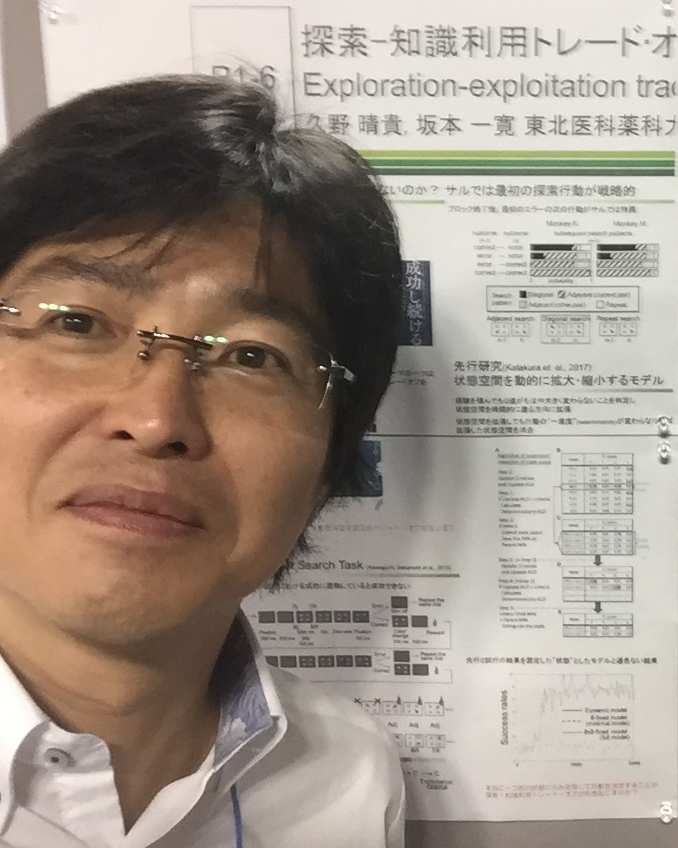
Kazuhiro SAKAMOTO
There are two types of uncertainty. There are two types of uncertainty. One has a fixed state space where which state is taken is determined stochastically like a dice. The other is the one in which the state space is not fixed. The environment with which the state space cannot be defined is called an indefinite environment. The purpose of this research is to construct and verify a reinforcement learning model with dynamic state space that enables adaptation to indefinite environments. Specifically, we will construct a model that performs a task called the two-target search task in real time, and verify it by analyses of neuronal activities, that is, clarify where in the brain the constituent elements of the model correspond. The task requires to fixate one of the four light spots, and two adjacent light spots serve as the correct target alternately in each trial (correct pair). After the subject correctly fixates the target a certain number of trials in succession based on the knowledge of the correct pair, another two light spots become a correct pair, and the subject has to find it by searching. In this sense, this task is suitable for studying the exploration-exploitation trade-off, which is an important problem in reinforcement learning. The reinforcement learning model with dynamic state space can perform the two-target search task by making the state space, which is fixed in the ordinary reinforcement learning model, dynamic.
Members
| Principal Investigator | Kazuhiro SAKAMOTO | Associate Professor, Tohoku Medical and Pharmaceutical University |
| Co-investigators | Hajime MUSHIAKE | Professor, Tohoku University |
| Satoshi ZUGUCHI | PH.D Student, Osaka University |
B05-9 Attention control training based on tailor-made neurofeedback system for facilitating motor learning in elderly
Research Outline
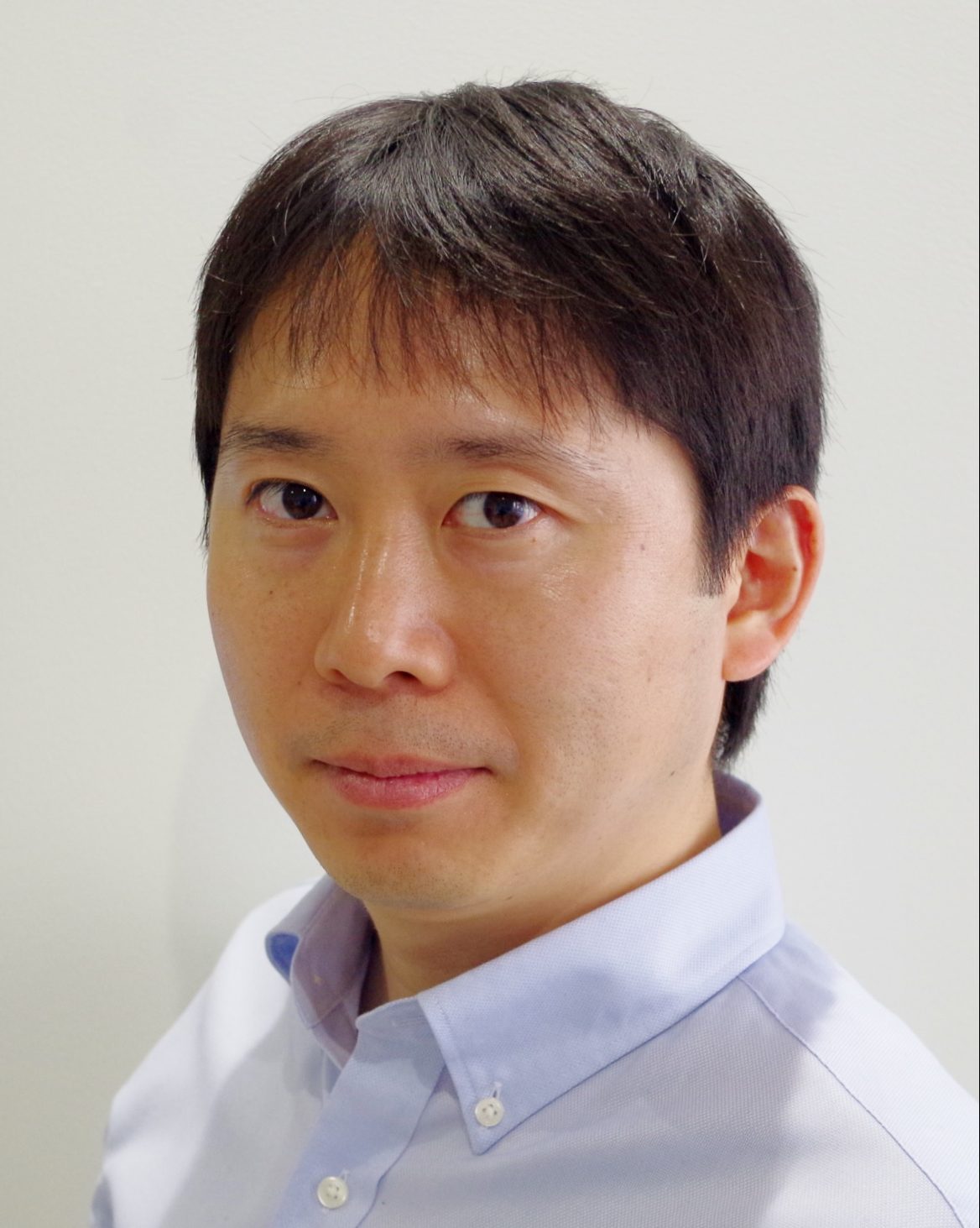
Takeshi SAKURADA
This research project aims to establish a tailor-made neurofeedback training system for improving cognitive function in the elderly by using visualization method for the individual differences in attentional ability from behavioral data and brain activity. I expect that the proposed tailor-made training can improve adaptation and motor learning abilities in the elderly. Finally, I try to propose an efficient intervention protocol based on a computational model for predicting individual training effect.
Members
| Principal Investigator | Takeshi SAKURADA | Assistant Professor, Ritsumeikan University |
B05-10 Modeling of the motor recovery process and optimization of rehabilitation strategy using VR
Research Outline
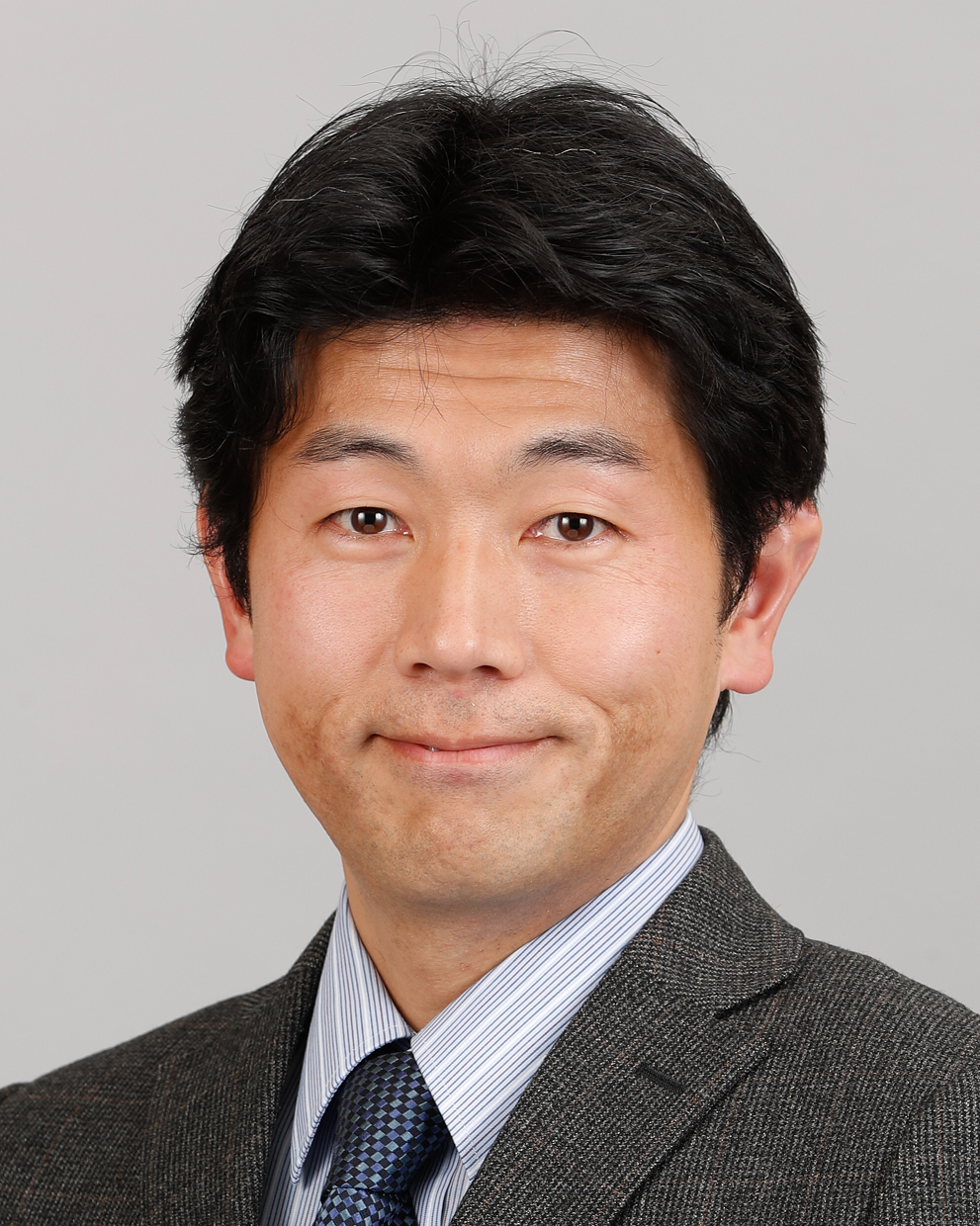
Tetsunari INAMURA
Conventional rehabilitation for motor recovery tends to be designed by physiotherapists and doctors. Since the physiotherapist observes the progress status of the rehabilitation and the reaction of the patient and estimates the state of the motor recovery, it is required to deal with many subjective and empirical factors to determine the rehabilitation policy.
This study aims to model such an interaction process between physiotherapists and patients to provide the most appropriate rehabilitation policy for each patient.
Members
| Principal Investigator | Tetsunari INAMURA | Associate Professor, National Institute of Informatics |
| Co-investigators | Fuminari KANEKO | Project Associate Professor, Keio University |
B05-11 Developmentalhyper-adaptability of sensorimotor dynamics under rapid growth
Research Outline
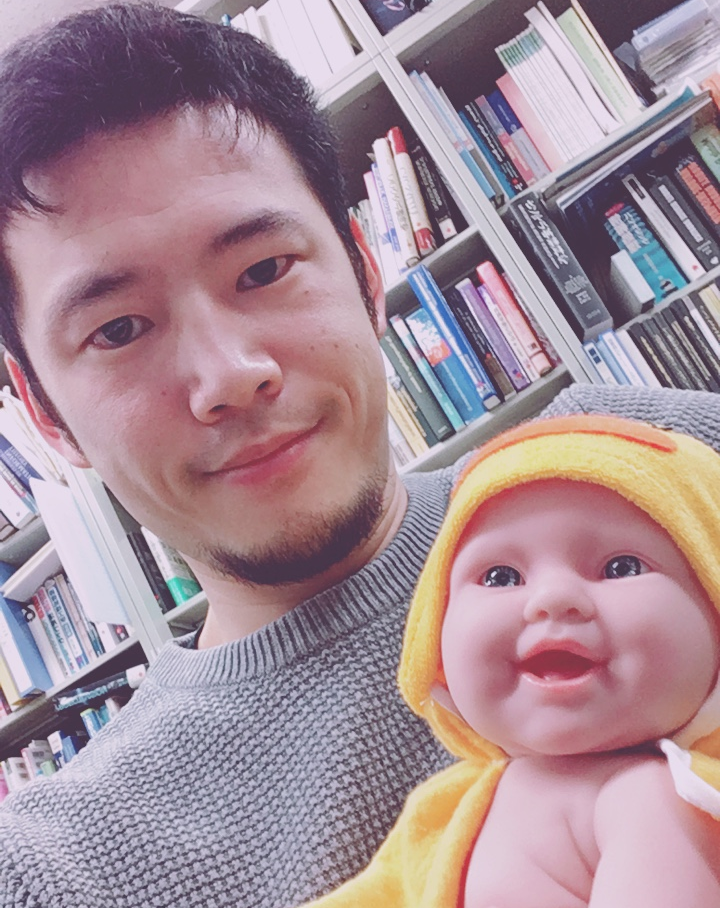
Hoshinori KANAZAWA
In early developmental phase, human shows rapid physical development and neural maturation, while at the same time humans would acquire sensorimotor dynamics that form the foundation of motor controls or behaviours in the later life. In this study, we try to understand the developmental mechanisms of sensorimotor dynamics and behavioural emergence by modelling the infantile spontaneous movements, the embodiment of the musculoskeletal system, and learning rules in the nervous system.
Members
| Principal Investigator | Hoshinori KANAZAWA | Research Assistant Professor, The University of Tokyo |
| Co-investigators | Yasuo KUNIYOSHI | Professor, The University of Tokyo |
| Dongmin KIM | Graduate Student, The University of Tokyo | |
| Masahiko KAWAI | Project Associate Professor, Kyoto University | |
| Yohei NOMOTO | Graduate Student, The University of Tokyo | |
| Akito YOSHIDA | Graduate Student, The University of Tokyo |
